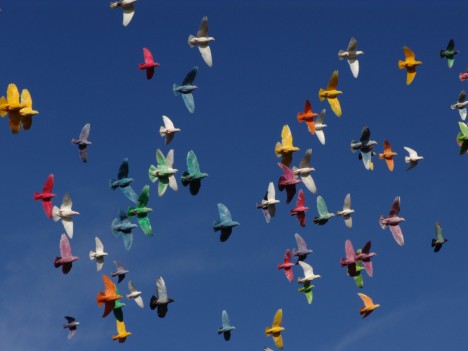Naturally Speaking
.jpg)
Community Contributed
By G.T. Larson
In our last several articles we have been looking at some of the geologic characteristics and events that have shaped the history and geography of Molokai. As we have seen, volcanic activity built Hawaii, but erosion has shaped it and is continuing to do so. The main factor in this erosional process is water; rainfall is the primary element, but the ocean also adds to the islands reshaping.
.jpg)
Throughout man's existence on this planet our climatic conditions have always been in a fluctuating condition. The rotation of the Earth, the tilt of its axis, energy coming from the Sun, all contributes to the dynamics that maintain and sustain life on earth.
The climate has never been static; it is and always has been changing. So to pronounce that the climate is changing is absolutely accurate, to the point of being obvious. The battle begins over the direction and the degree of this change and unfortunately, as with many issues today, the discussion of climate change has taken a very political bent. The popular political polarity that dominates our cultural landscape has gathered experts on the issues of climate change into their respected, though not always respectable, camps.
Research from many different scientific organizations, such as Goddard Institute for Space Studies, points out: “A planet's potential to develop and sustain life as outlined by NASA's astrobiology program, depends on three primary factors. The planet must have a reliable energy source, liquid water and appropriate conditions for the formation of complex organic molecules.” We have a reliable energy source, the sun, and a large supply of liquid water. These factors have existed for quite a while here on Earth. The controversy that has arisen is whether these conditions are still appropriate to maintain all the complex organic molecules, or are the most complex of all organic molecules, humans, by our activities, adversely affecting these appropriate conditions.
Almost every activity we do, nearly every action we take pollutes or has created some form of pollution in its development. This is becoming more and more our way of life as our way of life becomes more technologically complex. The computers we use, the vehicles we drive, the aircraft we fly in, bicycles we ride on, the clothes we wear, and food we eat all have been produced and or provided to and for us. Very little we use is naturally occurring. So all sides should be able to realize that our impact on Earth is abnormal in comparison to the rest of the molecules, the rest of our neighbors, the fauna and the flora of Earth.
We will continue to examine this debate next time. Aloha Ke Akua.







.JPG)
.jpg)
.jpg)
.jpg)
.jpg)
.jpg)
.jpg)



